One of the chief advantages of the Silva Cell system is its ability to provide a robust soil environment for city trees — but why is this beneficial in the growth of healthy urban forests?
Simply put, trees need adequate soil volume to properly grow: the more, the better. As we’ve discussed previously, roots are opportunistic in their growth and need plenty of soil space: “A 2009 study conducted by Susan Day and Eric Wiseman at Virginia Tech University analyzed young trees less than eight inches in diameter growing in unobstructed soil. They found that the ratio of root radius to trunk diameter was about 38 to 1. This means that a tree with a six-inch trunk diameter could have roots growing out from the trunk as far away as 19 feet.” Clearly, a large tree needs a correspondingly large soil habitat into which its roots can expand.
As arboricultural consultant Ben Rose observes:
“There is a direct relationship between the volume of below-ground growing space and the way in which a tree is likely to develop. The greater the soil volume, the faster the tree will grow, the bigger it will become, the healthier it will be, the more resilient it will be to pests and diseases, the better it will look, [and] the longer it can be expected to live.”
August Hoppe, certified arborist, echoes this theme when she notes that “Soil volume is one of the most important contributors to root and overall tree health. The average life span of a forest-grown tree can be 100+ years, while a tree on an urban street setting with [inadequate soil volume in a] limited root area may only be 15 years. Roots need space to grow and develop and seek out water and nutrient resources.”
This science is demonstrable.
By providing access to sufficient soil volume, trees in any environment can thrive — take the comparison image below, for example. In 2013, a series of trees were planted along Bernard Avenue in Kelowna, British Columbia. Some of the trees were planted in 4’x 4’ tree pits with structural soil (80% rock and 20% soil). The actual soil volume available to these trees is limited.
On the other hand, some street trees were planted in open planters that had access to a larger volume of soil. These open-planter trees also benefit from the larger soil volume’s ability to store water in the soil column (30% storage capacity), which reduces the drought effect in the summer. The structural soil, being 80% rock, drains very quickly with a lot less water held in the small soil volume — this means less water is available to the trees and more susceptibility to drought stress in the summer.
A decade later and the trees with greater soil-volume access — an example found on the left side of the image below — are significantly larger and healthier than their tree pit counterparts, as evidenced by the smaller tree on the right side.
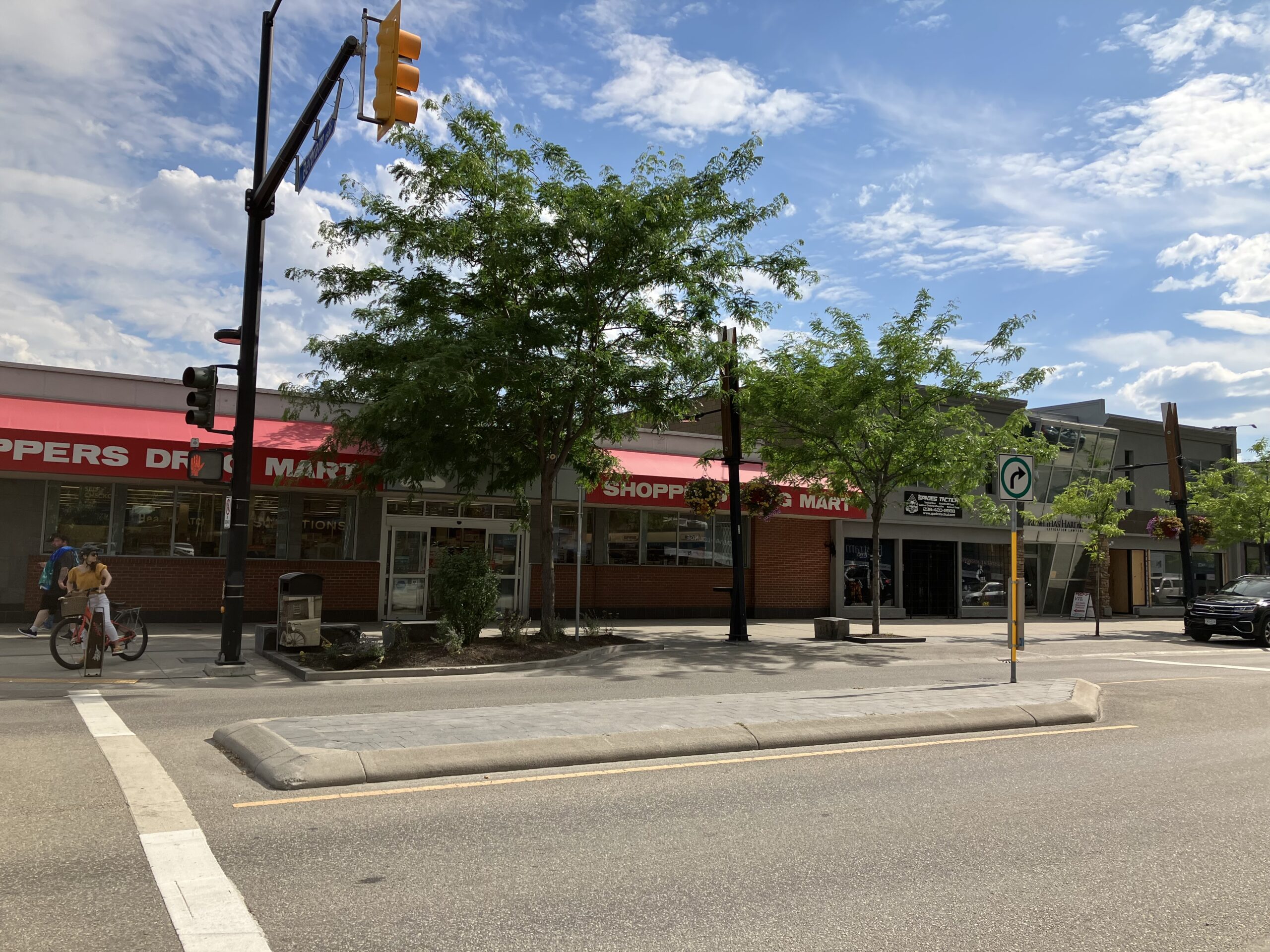
The tree on the left, with access to significantly more soil volume, is growing larger and healthier than its counterpart on the right.
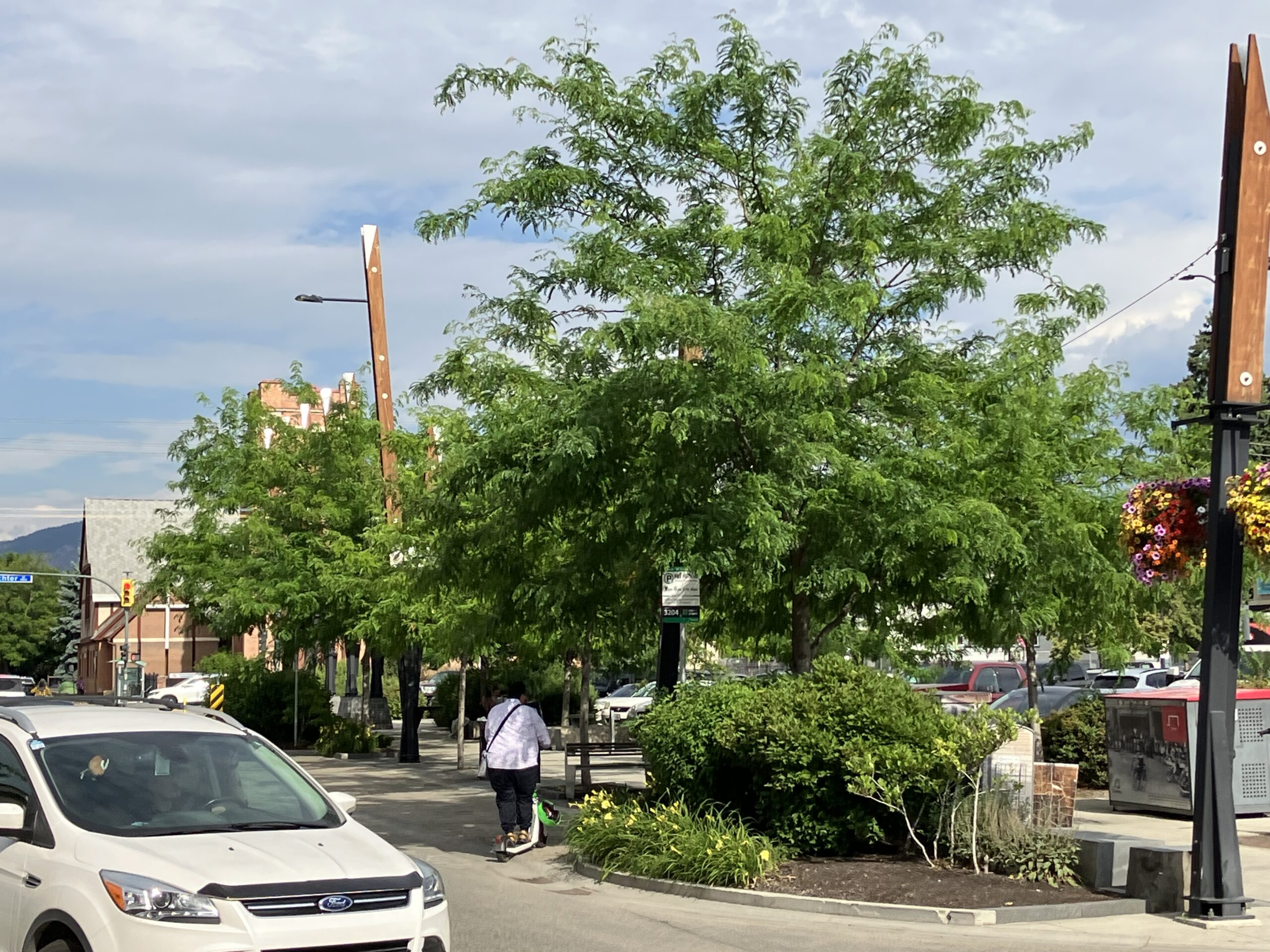
To realize the value of urban forestry, trees need to grow to healthy maturity. Replacing a tree every few years is not only inefficient and expensive, but it also deprives a city of those trees’ benefits, as we discuss in our blog on the value of mature trees:
“A City of Toronto study titled ‘Every Tree Counts’ compared the environmental performance of a 6” diameter tree to a 30” diameter tree. The larger, mature tree was able to intercept 10 times as much air pollution, store up to 90 times more carbon, and possess a leaf area as much as 100 times the size.”
There’s also the difference in canopy size, as well as air quality, water treatment, and shade-providing benefits. The bottom line is that larger, older trees perform better than their smaller cousins.
It’s important to note that soil compaction is another side of the same coin, as also discussed in a previous blog. Tree roots need hospitable soil to flourish — this includes both enough volume to grow (soil quantity) and optimal conditions for healthy expansion (soil quality).
Cities are beginning to understand the significance of soil when it comes to the vitality of urban forests. Many have instituted soil-volume standards: a required minimum amount of accessible soil for every newly planted public-realm tree. Toronto, for instance, mandates 15 cubic meters (529 cubic feet) of soil volume per tree in a shared environment or 30 cubic meters (1,059 cubic feet) per tree if not shared. American cities like Denver, San Diego, Columbus, Seattle, Raleigh, Washington D.C., Cleveland, and New York City also have soil-volume standards in place.
The City of Maple Ridge in British Columbia is a perfect example of how prioritizing soil can transform a town. A decade-plus relationship between DeepRoot and Maple Ridge began in 2009 when trees were planted along 224th Street, each one accessing 15 cubic meters of soil volume. Subsequently, the City of Maple Ridge — thanks in part to the prosperous condition of the 224th Street trees — enacted a soil volume mandate, decreeing that all new public-realm trees were required to have access to at least 15 cubic meters of soil volume.
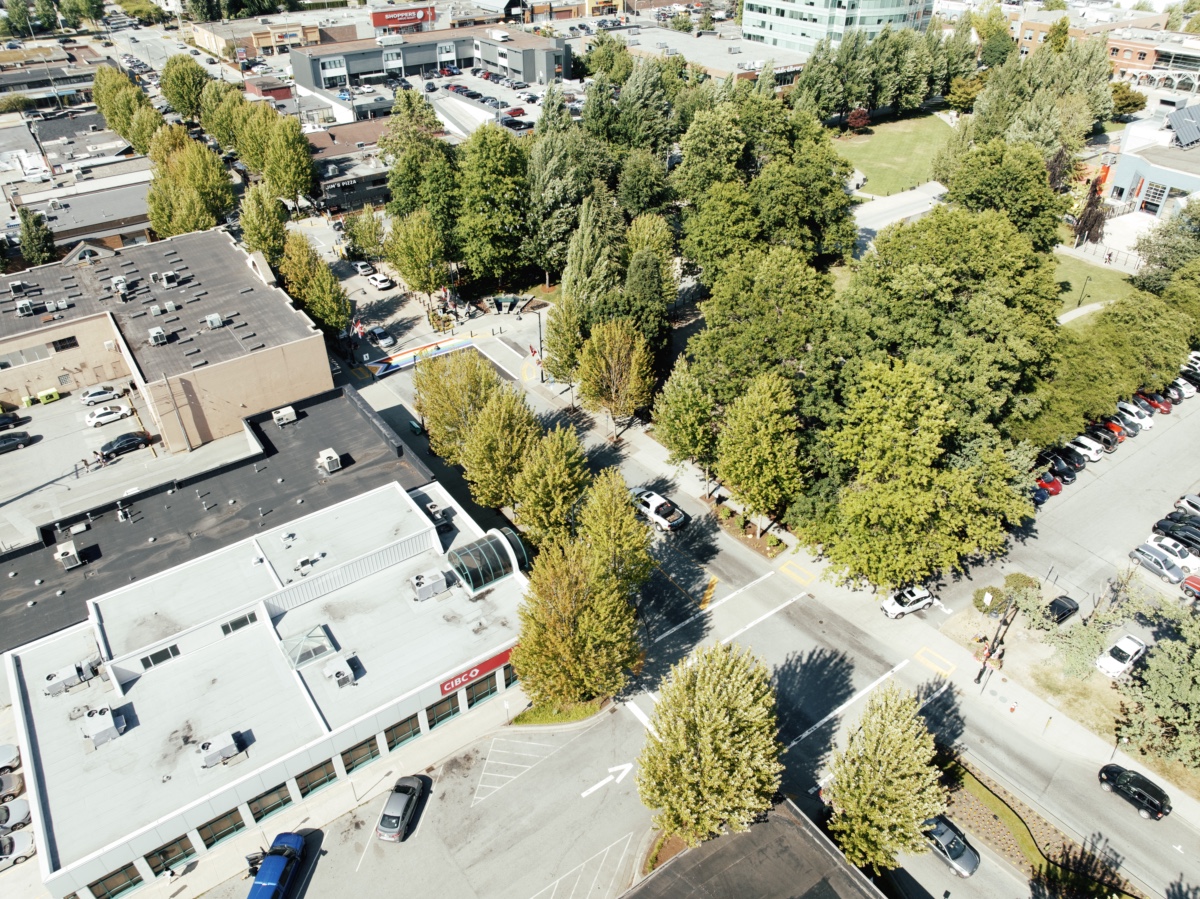
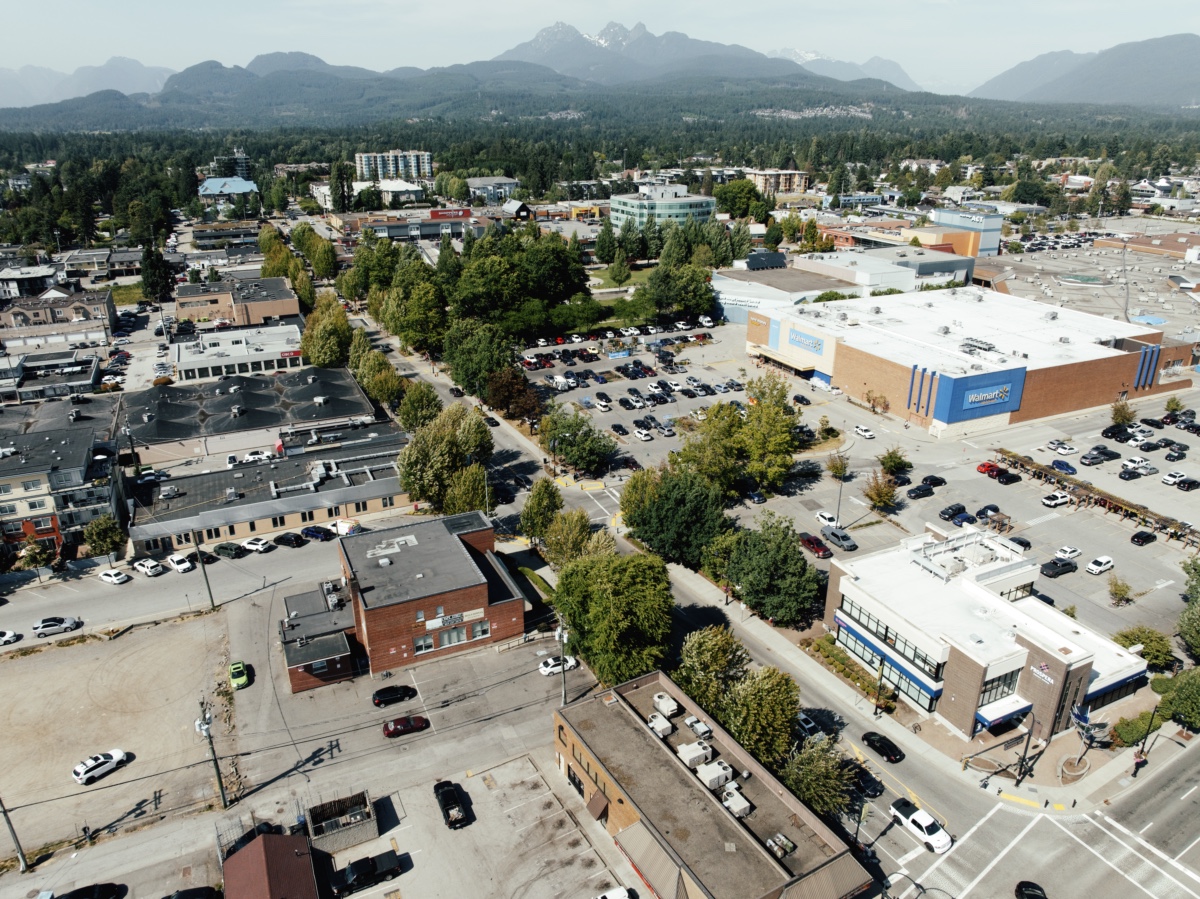
The results are impressive, as the city canopy coverage is growing automatically in congruence with the new soil mandate:
“In just over a decade, Maple Ridge and DeepRoot have partnered on at least a dozen more projects, bringing prosperous, welcoming canopy coverage to the city’s streets, including the main thoroughfare of Lougheed Highway. The success of each installation and subsequent tree growth has led to continued, ongoing cooperation between Maple Ridge and DeepRoot — with the local citizens ultimately being the beneficiaries of their increasingly green town.”
Understanding the value of soil, at both the government and design level, is influential in building healthy urban forests. As Ben Rose summarizes: “Policymakers can help ensure that trees planted in hard landscaped areas are given adequate soil volumes by setting minimum soil volumes for trees of different sizes. Even while minimum standards have not been set, forward-thinking landscape architects can make a difference by providing trees with adequate soil volumes at the time of planting.”

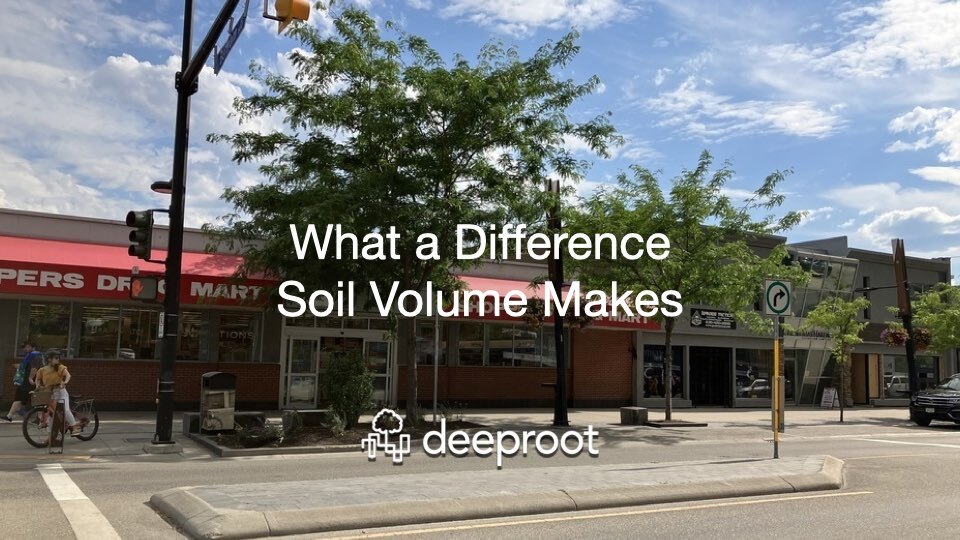




Leave Your Comment